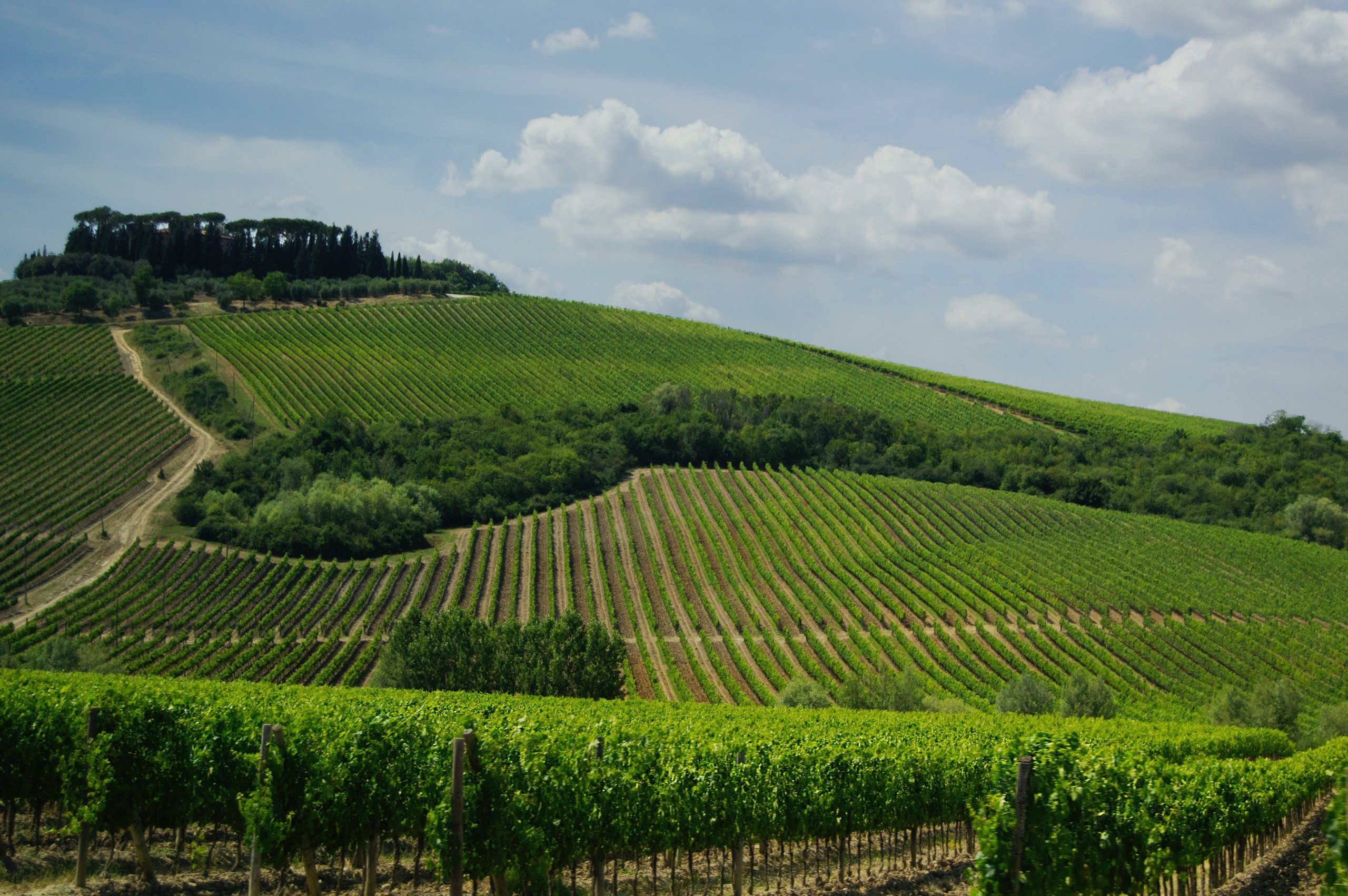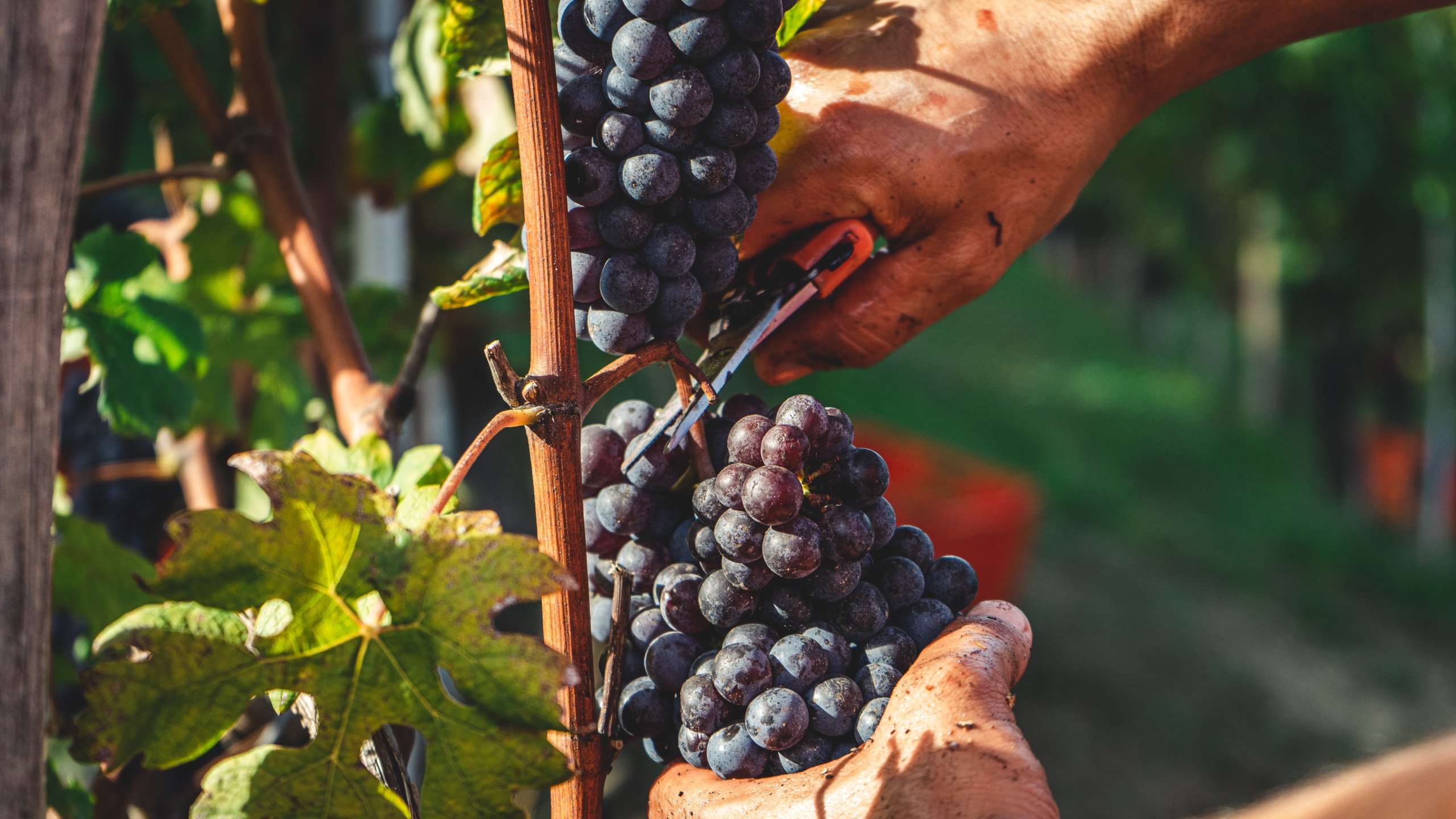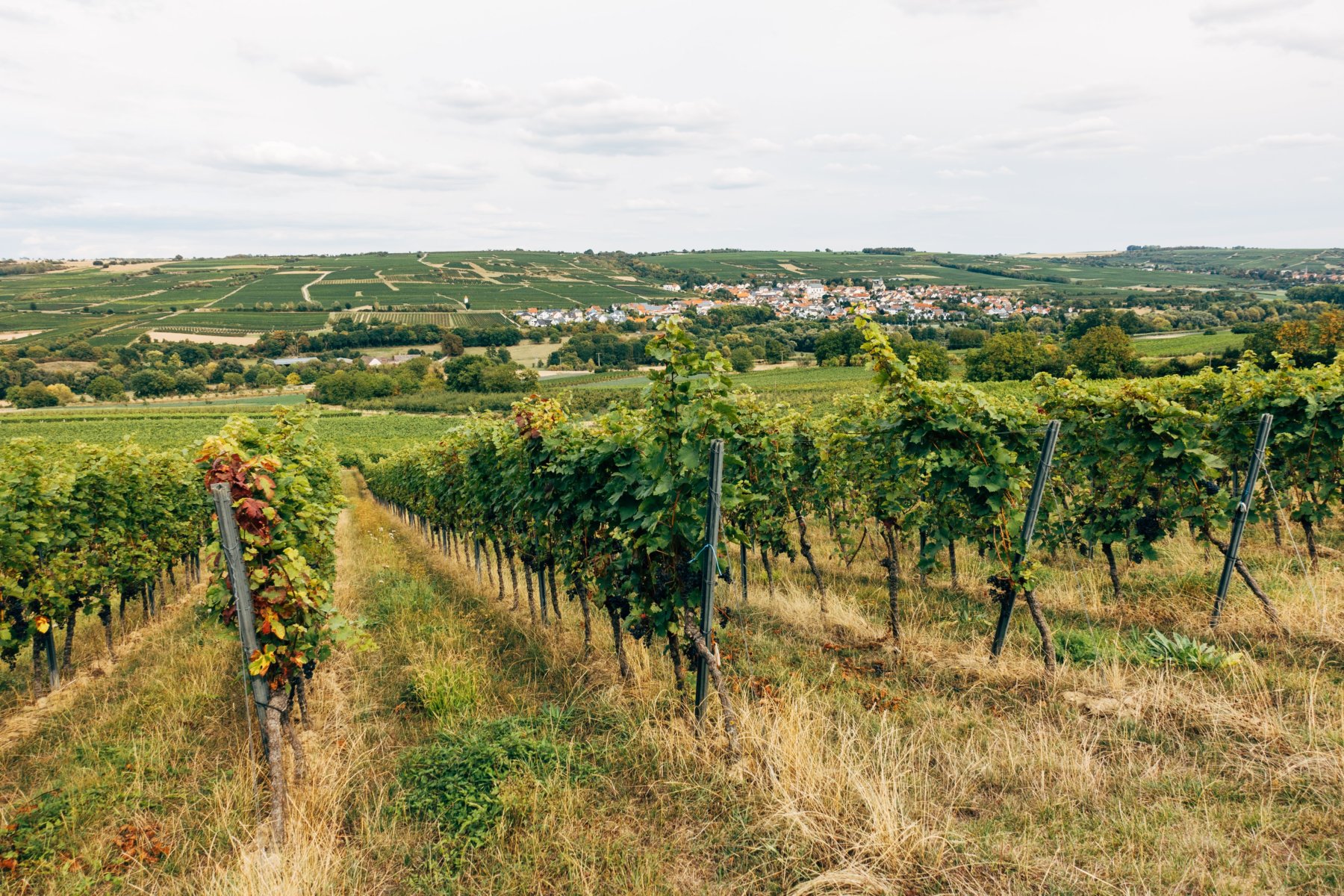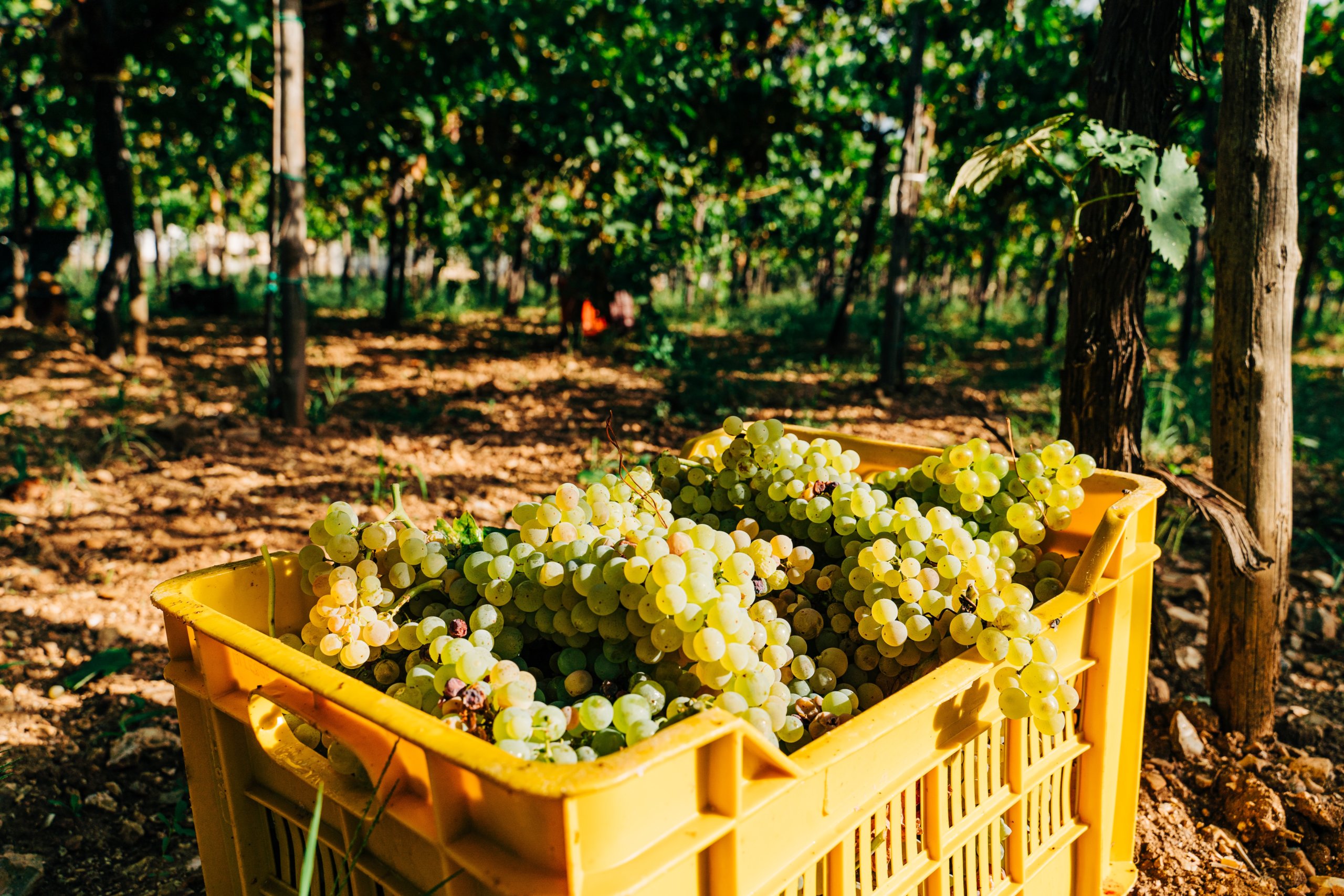To summarise all of Italy’s endless produce would take many volumes, but to get an impression of our most precious and unknown ingredients we’ve asked some of the country’s top chefs to talk to us freely about biodiversity.
Monica Larner: Italian wine, biodiversity and indigenous grapes
With all the focus going on a few famous regions, and often overshadowed altogether by its French neighbours, the sheer variety of Italian wines is often overlooked. We talk to Monica Larner, an award-winning wine critic and writer who lives in Rome, about Italy’s fantastically diverse offering of wine. The Robert Parker Wine Advocate for Italy, Monica was selected in 2003 to be the very first dedicated Italian wine editor for Wine Enthusiast. Recently we had live interview with her to discover the ancient roots behind Italy’s many thousands of grape varieties, the Roman trade roots and cultivation methods that we’re still reaping the rewards from today, and why, in Italy, it’s all about territorio.
The full interview you can watch here.

First of all, what drew you to a career in wine?
I started as a journalist, I never thought I’d be a wine taster. So for me, ever since I started doing it, it’s so fascinating to understand the story behind the wines. I see my job as the way of telling the story of Italy, using its grapes as the mediators, as the voices, as the characters. The more you learn about Italian wine, the more you realize how variated it is, how incredibly complex it is, and how each little grape that comes from each region tells a story about that place – its food, its people, its art, its local architecture. So it becomes a really complex storytelling machine, this tiny little fruit, and that is the thing which inspires me the most.
And what about Italian wine? Could you tell us some more about the diversity between the country’s 20 regions.
I try to use wine to tell a story about the region. So when you look at Italian wine, of course, you have this boot-shaped peninsula. It goes from the 45th to 38th parallel, so you have this perfect range of exposure along the Northern hemisphere for grape growing, with over 7000km of coastline and all these beautiful breezes.
In ancient Roman times Italy was used as a nursery, a place to grow grape plants in the land of wine. So you have all these different grapes which arrived in Italy from various points in the Mediterranean, and were cultivated here. Because of our position in the Mediterranean many of these grapes then ended up moving across towards France and other parts of the world. But the interesting thing is that the ancient civilisations also cultivated by seed instead of by cutting the grape wine plant. When you do a cutting you’re getting a clone, an exact photocopy, whereas planting by seeds you create a slightly new genetic material each time. This created an enormous biodiversity of grapes, which is really the most exciting thing about Italian wine.
The more you learn about Italian wine, the more you realize how variated it is, how incredibly complex it is, and how each little grape that comes from each region tells a story about that place – its food, its people, its art, its local architecture.
Today we have around 400 grapes which are used commercially, but there are two or three thousand on record, which are recognized as indigenous or traditional grapes of Italy. And you can’t rival that biodiversity. For example you can make a beautiful Sangiovese in Tuscany, but the minute you take that Sangiovese and move it to another part of the world, of course it reacts differently. And the expression you get from Tuscany is a fingerprint of Tuscany in Sangiovese in Tuscany. And that becomes a competitive advantage, because what other country else can do that? The same goes for Nebbiolo, for Nero d’Avola, and for hundreds of other indigenous grapes.
So when you travel from the North to the South, how would you define Italian wines?
I like to connect why it tastes different, what makes it Tuscian, what makes it Umbrian, what makes it Sicilian, what makes it Piemontesian and so on. I’m sure that everyone is aware of how many dialects Italy has, even from one town to the next, and wines are similar. For example, when you start in the far north in Piemonte, you have the Nebbiolo grape which is a base of Barolo and Barbaresco, two of Italy’s most important wines. The grape there is meaningful, important and deep. It’s complex and intellectual, pushes you, tricks you sometimes. It requires a lot of your passion and tension. And this kind of mirrors the personality of Piemontese who are culturally very close to France and have long traditions.

If you head down towards Tuscany you get wines which are rich and warm, there is more weight, more softness. It’s velvety, it’s seductive, and those wines of Tuscany are also mirroring these amazing landscapes with cypress trees and rolling hills. And then you go down to the middle, to Campania and Naples, and the volcanic soil of Vesuvius. These wines are full of minerals, very salty and bright and pristine, and they remind me of lemon grows on the Amalfi coast, bright colours and pristine air. Finally you go all the way down to Sicily and the wines of Mount Etna, very pristine and noble and proud. The combination of indiginous grapes with different types of territorio where wine grows gives every little pocket its own fabulous personality, and those wines magically fit with local cuisine.
What are your favorite regions for wine?
I live in Rome which is a strategically good location, but also it’s important for the region of wine. The region of Lazio which surrounds Rome is not particularly known for its wine, but Rome is the biggest wine market so it has most availability of different wines from most of Italy. But the regions that excite me the most as a journalist are in the south, Sicily, Calabria, Campania, Puglia, Molise, Abruzzo, Sardinia. I would say that’s where you find more discoveries, there are more things to discover, new grapes that have never before been catalogued. But I also love Tuscany, Veneto and Piemonte wines, that are very long ageing.
What do you think are the grapes that ancient Romans were drinking?
Well, there are a lot of grapes in Campania that still grow, like Aglianico and even some white grapes, which we know were favourites in Caesar’s Rome and also in the Castelli Romani area of Lazio which is the volcanic area outside of Rome. There were other grapes that were used, but these grapes quenched the thirst of ancient Rome. They loved them so much, and there were carriages of these wines going to thirsty Rome because there was a huge market. There are ways to connect the great majority of grapes that you find in Italy to the ancient world, in terms of what the locals drink or how these grapes got there, and most importantly how they can trace the route of the wine trade.

I heard that ancient wine was not really drinkable, is it true?
Yes! The Romans had all sorts of strange ways of preserving or conserving the wines, so they put them in clay amphora, and those wines were probably oxidized, but anyway they used a lot of raisins or honey, or any other stuff which used to close the amphora. Also, they flavoured them with different herbs and oils even, so I’m sure that their palate was terrible by modern standards. I’m not sure what the priorities were, but I think they were looking for alcohol.
What about sparkling wines in Italy?
Italy has quite a few sparkling wine regions, and dances a very complicated reality between the two methods of making sparkling wine. One is the Martinotti method used for prosecco, which is a huge category of sparkling wine in Italy of course. It’s simpler to make, because the secondary fermentation of wine occurs in a huge steel container. Then there’s the traditional method used for champagne, where second fermentation happens inside the bottle, the Metodo Classico. So you have this huge range of sparkling wines, from sweet and fun and affordable prosecco to the other side of the spectrum, where you have Fanciacorta wines in Trento and the Dolomites, right down to Sicily, with a very tight criteria and traditional method.
A glass of wine can become the best tour guide of Italy: there is no better way to discover the country.
Sweet wines
Every single region in Italy has their completely different dessert wines, just as they have different sweets. For example, in Veneto, they have a wine Recioto, and that is a fascinating wine, because they use the same grapes as used to make other wines like Amarone. You have sparkling, semi-sparkling sweet wines like Moscato d’Asti in Piemonte, you have Vin Santo del Chianti Classico, you have quite a few air dried type wines from Calabria and Puglia. Of course, you go down to Pantelleria, further south, a little volcanic island where air-dried dessert wines made with what they call Zibibbo, which is Moscat de Alexandria, dried in the sun on huge tables. Picolit from Friuli Venezia Giulia is really interesting. It’s a dessert wine made from a grape that has a great genetic defect – each plant that has only a few grapes on it, and from that the plant is struggling to put all of its energy, concentration and flavours into these 5 little berries. So you have this amazing distinctive intensity from this strange grape. But obviously it doesn’t produce enough volume, so many are just thrown away, unplanted and discarded. There are only a few hectares of Picolit vines are left in the world, and a couple of hardcore producers who really believe in it. It tastes like acacia honey, with a very delicate, beautiful sweetness.

And finally, what can you tell us about pairing wine with food?
I think the key is to look to regional food and what is eaten in the area the wine is from. So in Sicily you have Cerasuolo di Vittoria, which is light-bodied red wine made with Frappato and Nero d’Avola grapes. That pairs so beautifully with the pasta they have, they roll it by hand and serve with sour fish, maybe a little bit of fried aubergine, maybe a few mint leaves. Then you go to Tuscany and you get these beautiful wines from areas like Pisa and San Miniato, which have a more robust structure, and you can pair them with beautiful cuts of Bistecca Fiorentina. And then you go to the northern regions, where there is risotto, which can be eaten with Amarone and even cooked with a little Amarone too. And in Piemonte, there is a huge tradition of beautiful tajarin, which is very thin cut pasta made with a lot of egg yolk, so there is kind of fatness in your mouth, so you need an acidic structure of Nebbiolo to kind of break through that. So all in all, a glass of wine can become the best tour guide of Italy: there is no better way to discover the country.
